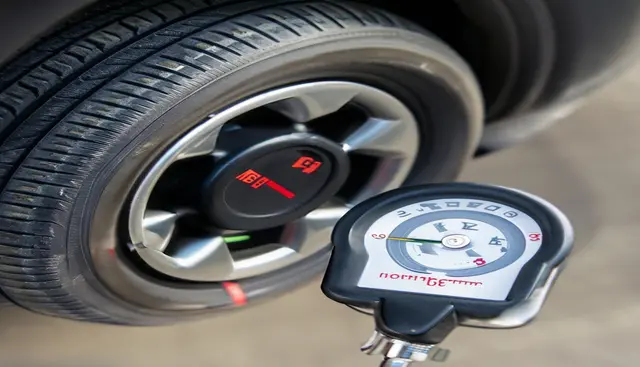Modern vehicles come equipped with tire pressure monitoring systems (TPMS) to alert drivers of low tire inflation. When you rotate your tires, you may wonder how the TPMS still knows which tire location corresponds to each sensor. In this article, we’ll explain how does TPMS know which tire is which after rotations or position swaps.
TPMS Sensor on Each Wheel
TPMS works by having individual tire air pressure sensors mounted inside each wheel. The sensors transmit radio signals with identification codes unique to that wheel spot. Rotating tires doesn’t affect the sensor assignments.
Receiver Deciphers Signals
A receiver module on the vehicle picks up the sensor signals and feeds the pressure information to the TPMS computer. The computer contains the ID matching for each wheel stored in its memory.
How Does TPMS Know Which Tire is Which
After a tire rotation, the TPMS receiver continues detecting signals from the same sensors now at new positions. It cross-references the received sensor IDs with the programmed wheel assignments to decipher which tire is reporting.
For example, if the left front tire is swapped to the right rear in a rotation, the sensor in that wheel still broadcasts the left front sensor ID. The TPMS computer knows to now link that ID from its original left front assignment to the new right rear position.
Programming on Install
This programming of sensor IDs to wheel locations happens automatically when the TPMS system and sensors are first installed on a vehicle. DIY rotations don’t require any sensor reprogramming.
Professional installers also have TPMS tools to overwrite these assignments when sensors are replaced or positions are changed from their factory order.
Auto or Manual Relearn
Some TPMS can automatically relearn tire positions after a rotation once driving resumes. The system recognizes the sensor signals have moved to new locations based on order of detection.
Other systems require a manual sensor relearn using a diagnostic tool. This synchronizes the new wheel position data.
Status Icons Update on Display
After successfully decoding new wheel locations from a rotation, the TPMS will display the pressure icons and warnings oriented to the revised positions. Low pressure alerts will match the new sensor placements.
Conclusion
Through the use of programmed sensor IDs for each wheel that transmit rotationally, TPMS cleverly keeps track of tire positions even when they are swapped around on the vehicle. Automatic or manual updating of the wheel order ensures low pressure alerts correspond correctly after tire rotations are completed.
Key Takeaways:
- TPMS uses sensors with unique IDs at each wheel to identify pressure data.
- Onboard computers remember which sensor matches each wheel position.
- After rotations, the sensors broadcast the same IDs from new locations.
- TPMS cross-references the ID list to determine new positions.
- Auto or manual resetting may be needed to sync new wheel order.
- Alerts orient properly to updated rotation pattern.
Do TPMS sensors know when you rotate tires?
TPMS (Tire Pressure Monitoring System) sensors typically do not automatically detect when you rotate tires. You may need to reprogram or reset the TPMS sensors after a tire rotation to ensure accurate pressure monitoring.
How is data transmitted by TPMS sensors?
TPMS sensors are typically activated by a low-frequency (LF) signal at 125 KHz, which varies in power depending on the vehicle. Once activated, these sensors transmit data using an ultra-high-frequency (UHF) signal in the range of 314.9-433.92 MHz for communication.
How accurate are tire TPMS sensors?
TPMS (Tire Pressure Monitoring System) sensors are generally quite accurate, often providing readings within a 1 psi (pound per square inch) margin of error. Modern direct TPMS systems often employ gauges mounted on the wheel or tire valve to measure and report tire pressure accurately. This level of accuracy is typically maintained in these systems.
How are TPMS sensors activated?
TPMS sensors are activated when the vehicle is in motion. They rely on the rotation of the wheel to generate centrifugal force, which wakes up the sensor. Once active, the sensor begins transmitting tire pressure data to the vehicle’s monitoring system.
